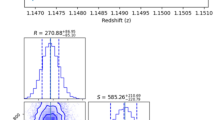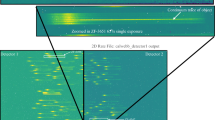Abstract
IT has often been said that the history of the race is that of the individual writ large, and this remark is specially applicable to the question of the size of the universe. The new-born child is unable to form an adequate conception of the size of the world, probably because it takes its cradle or its nursery as its unit of measurement. It was the same with the human race in its infancy. Taking for granted that the earth was the central and most important part of the universe, it somewhat naturally supposed that the earth was comparable in size with the whole universe.
This is a preview of subscription content, access via your institution
Access options
Subscribe to this journal
Receive 51 print issues and online access
$199.00 per year
only $3.90 per issue
Buy this article
- Purchase on SpringerLink
- Instant access to full article PDF
Prices may be subject to local taxes which are calculated during checkout
Similar content being viewed by others
Rights and permissions
About this article
Cite this article
Jeans, J. The Size and Age of the Universe. Nature 137, 17–24 (1936). https://doi.org/10.1038/137017a0
Issue date:
DOI: https://doi.org/10.1038/137017a0
This article is cited by
-
Relativity Theory and the Universe
Nature (1936)



